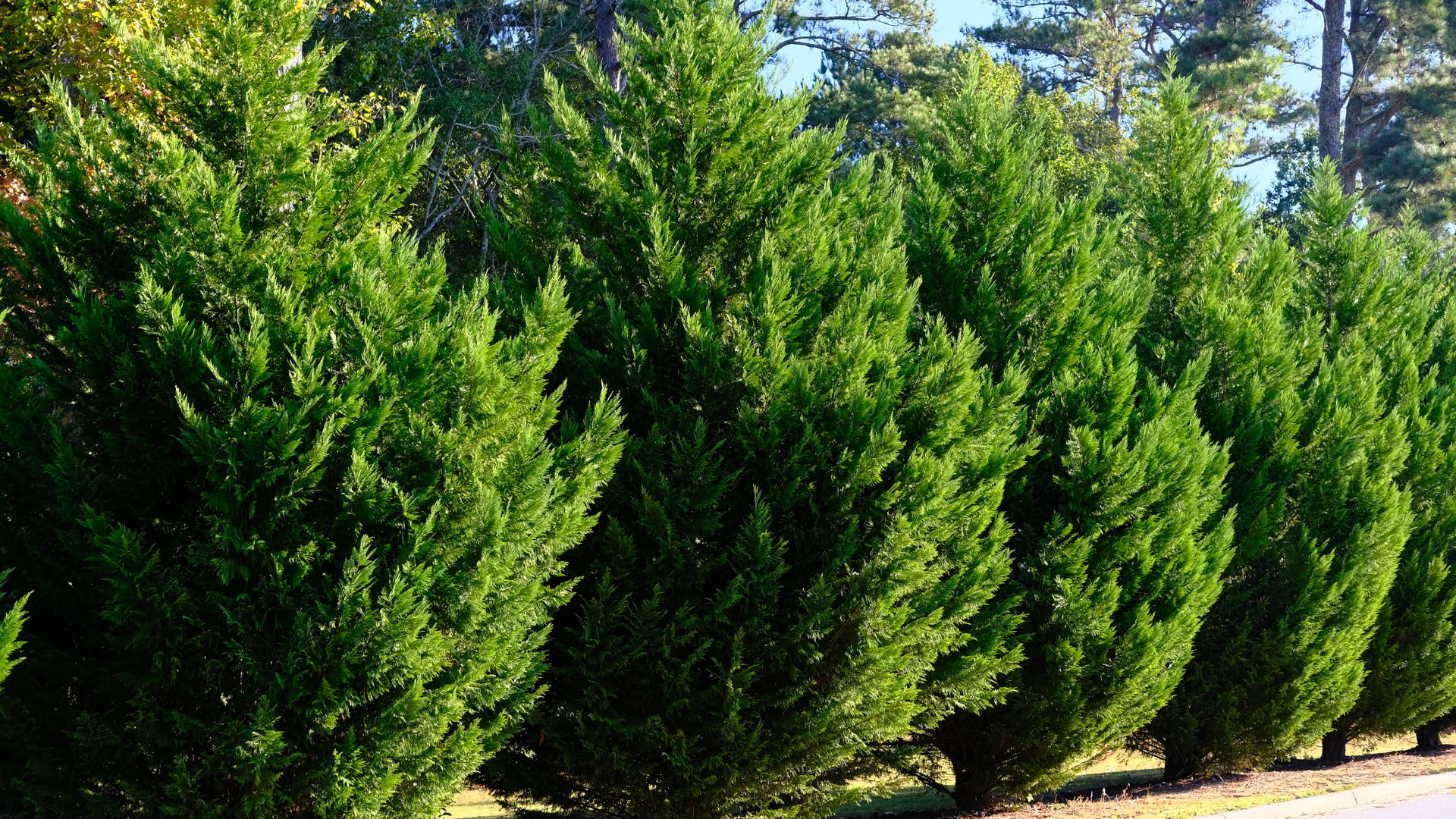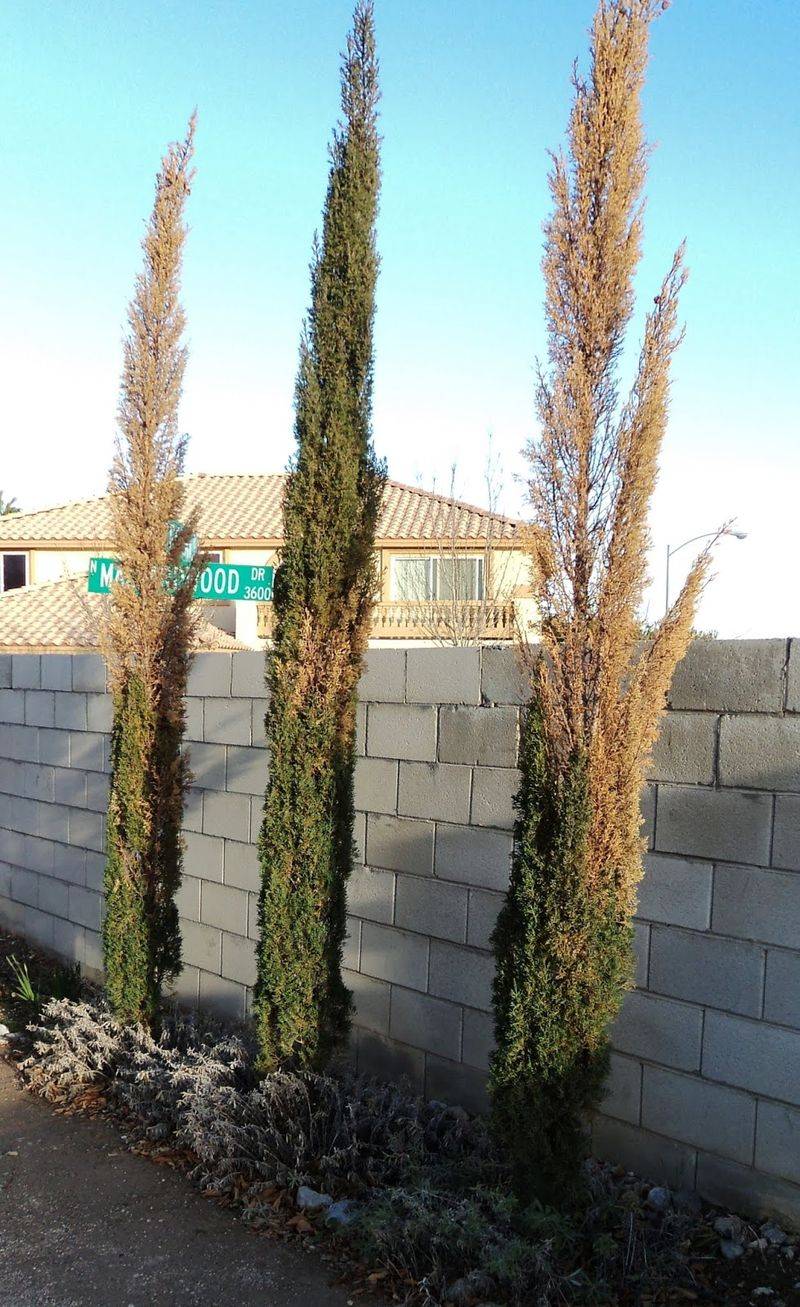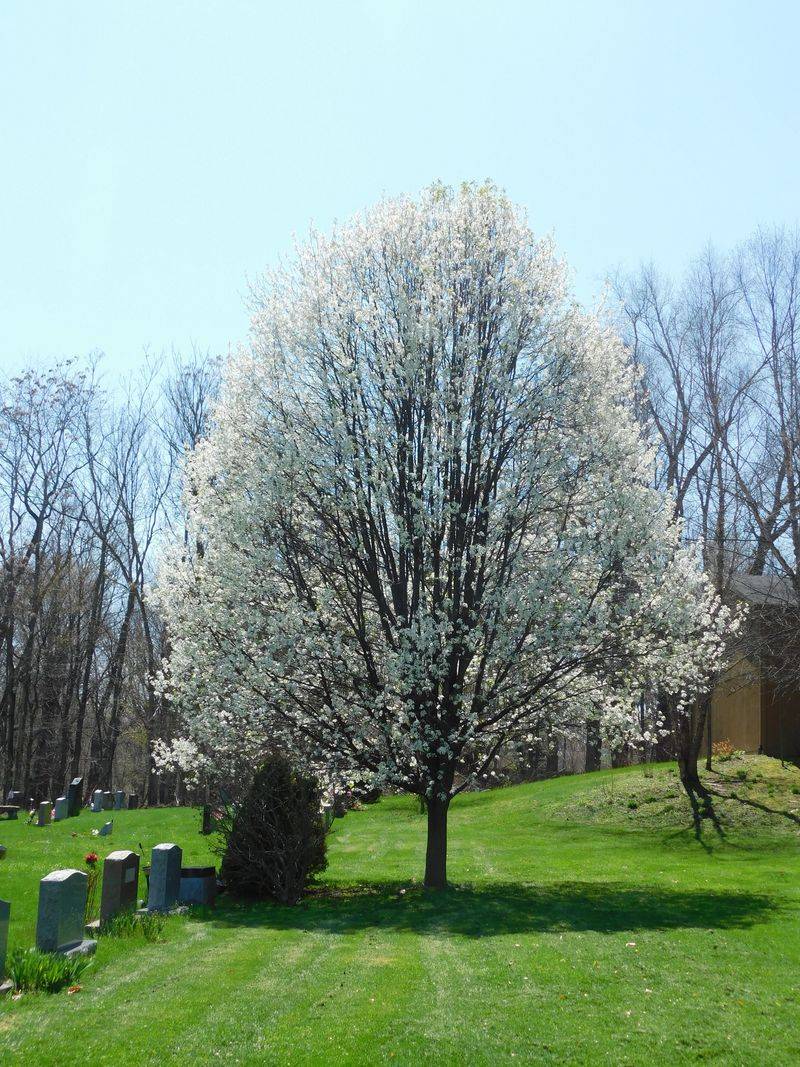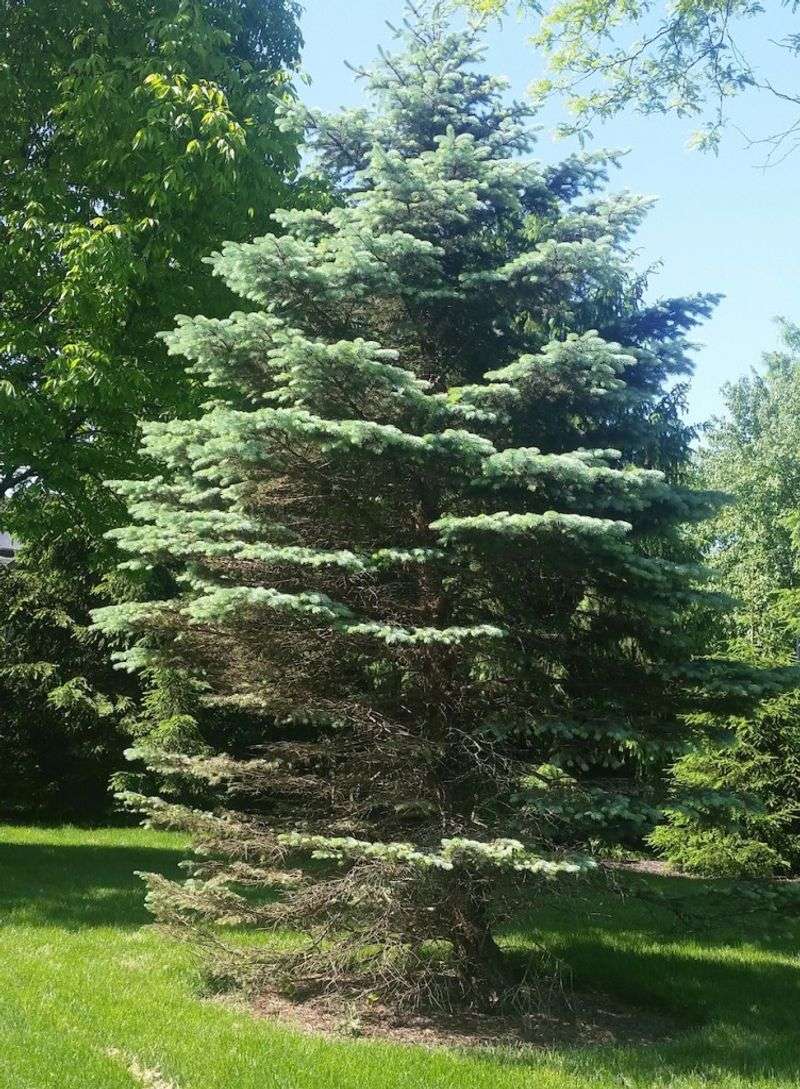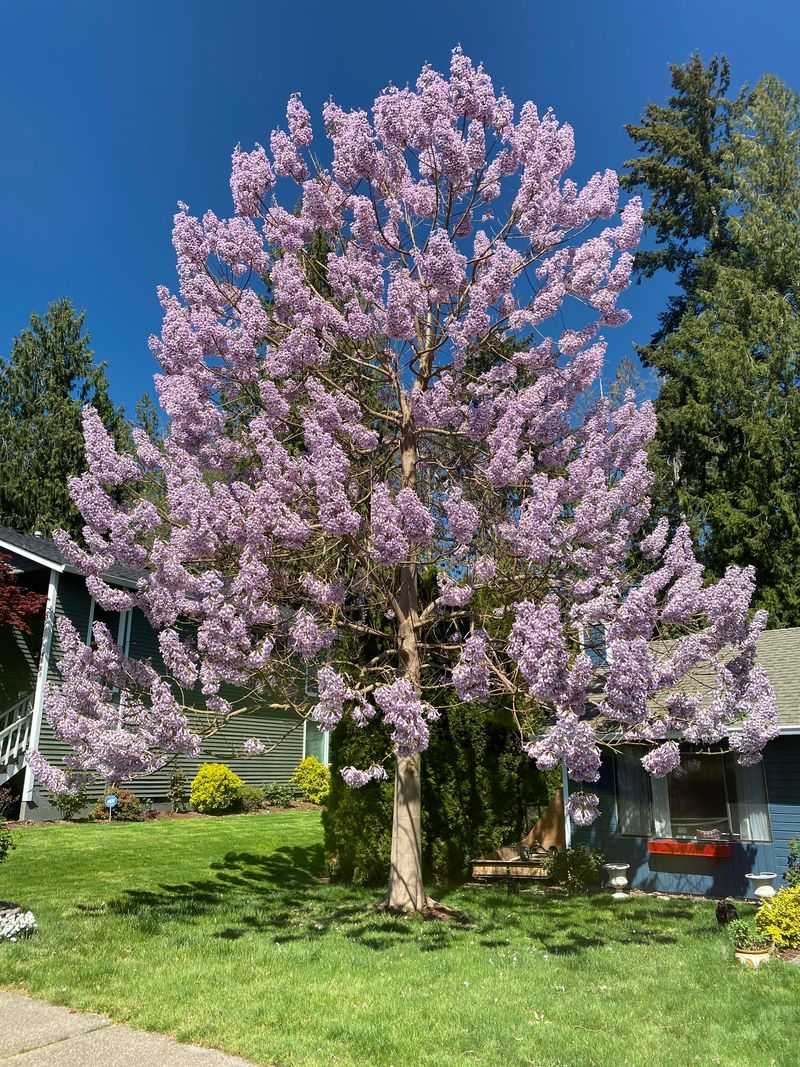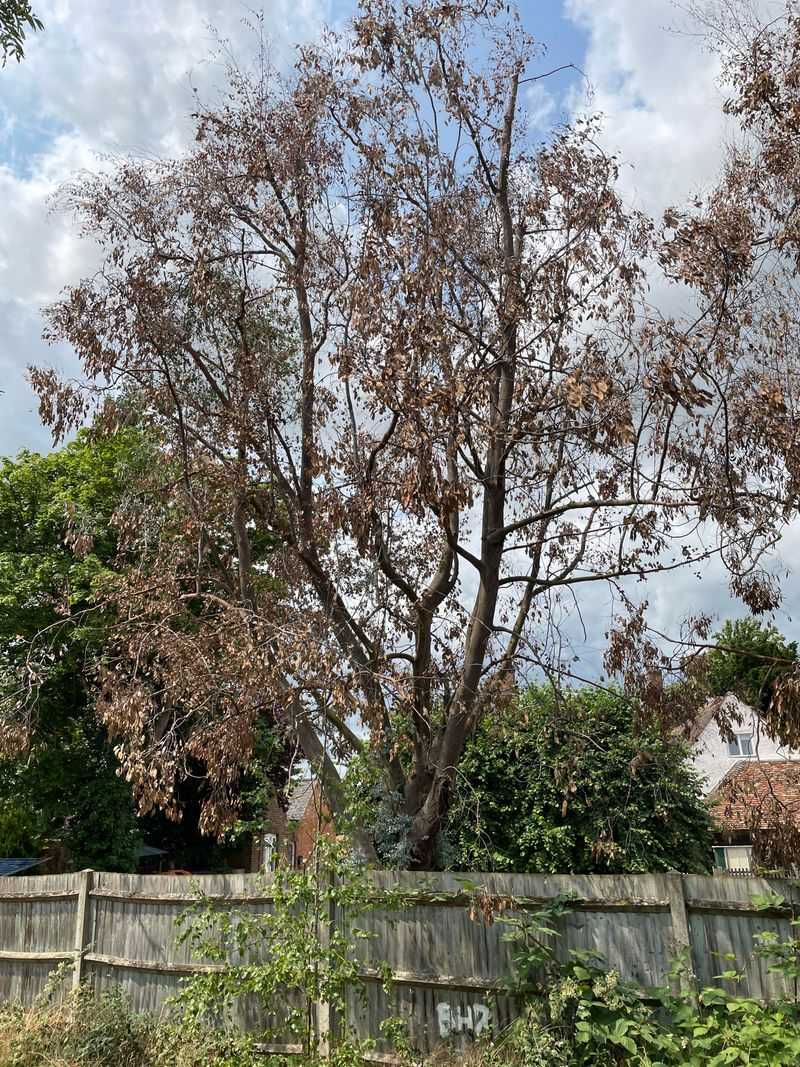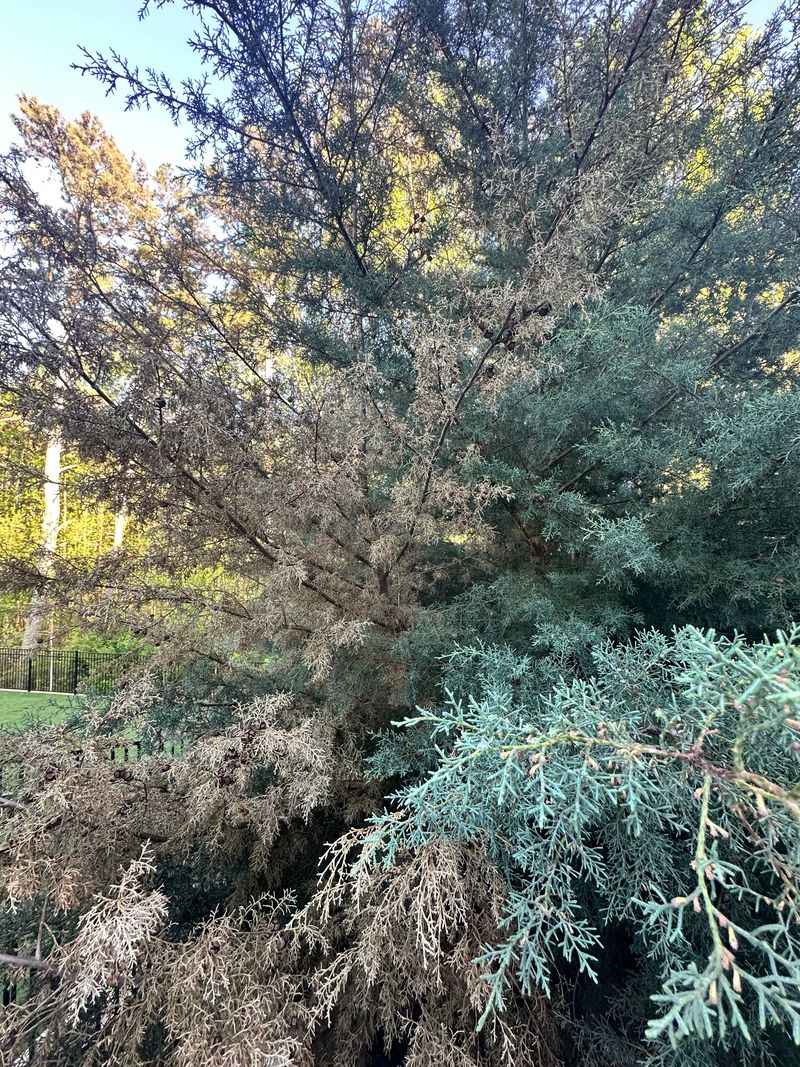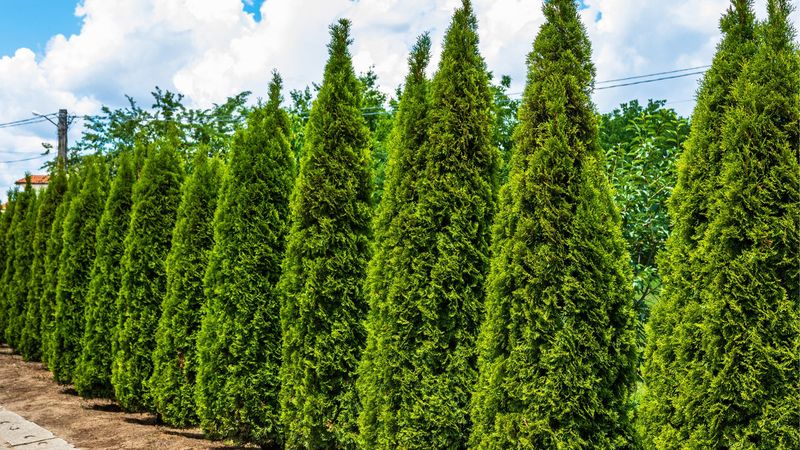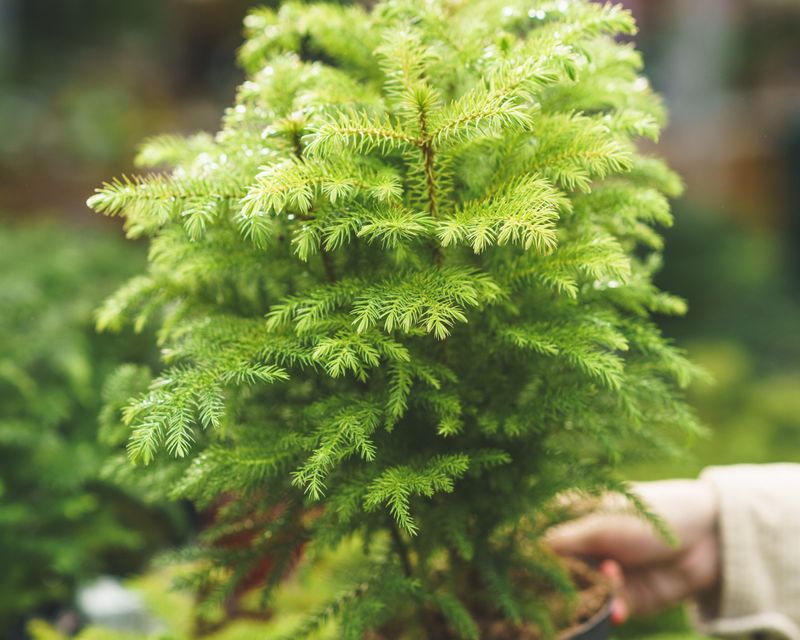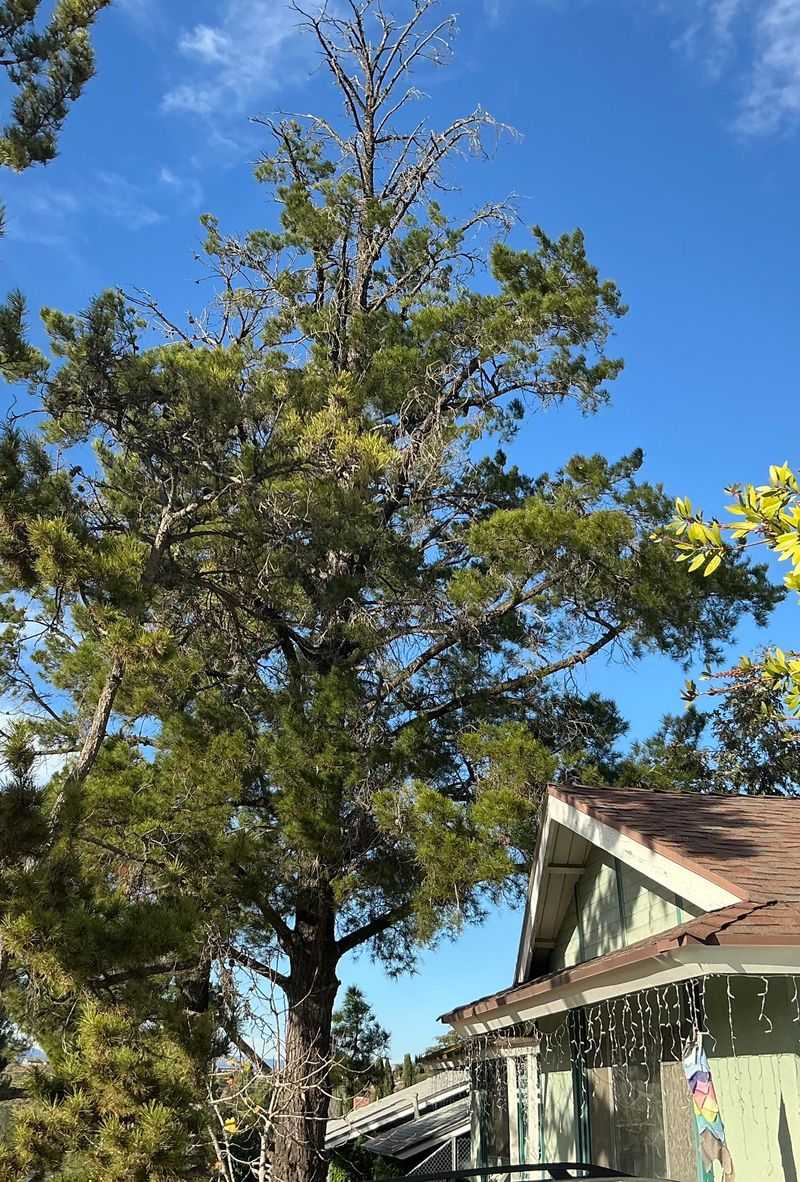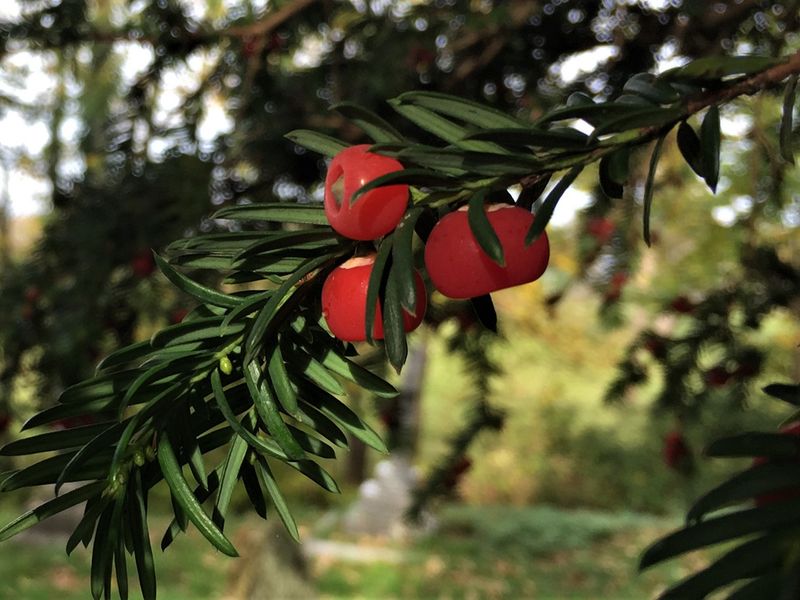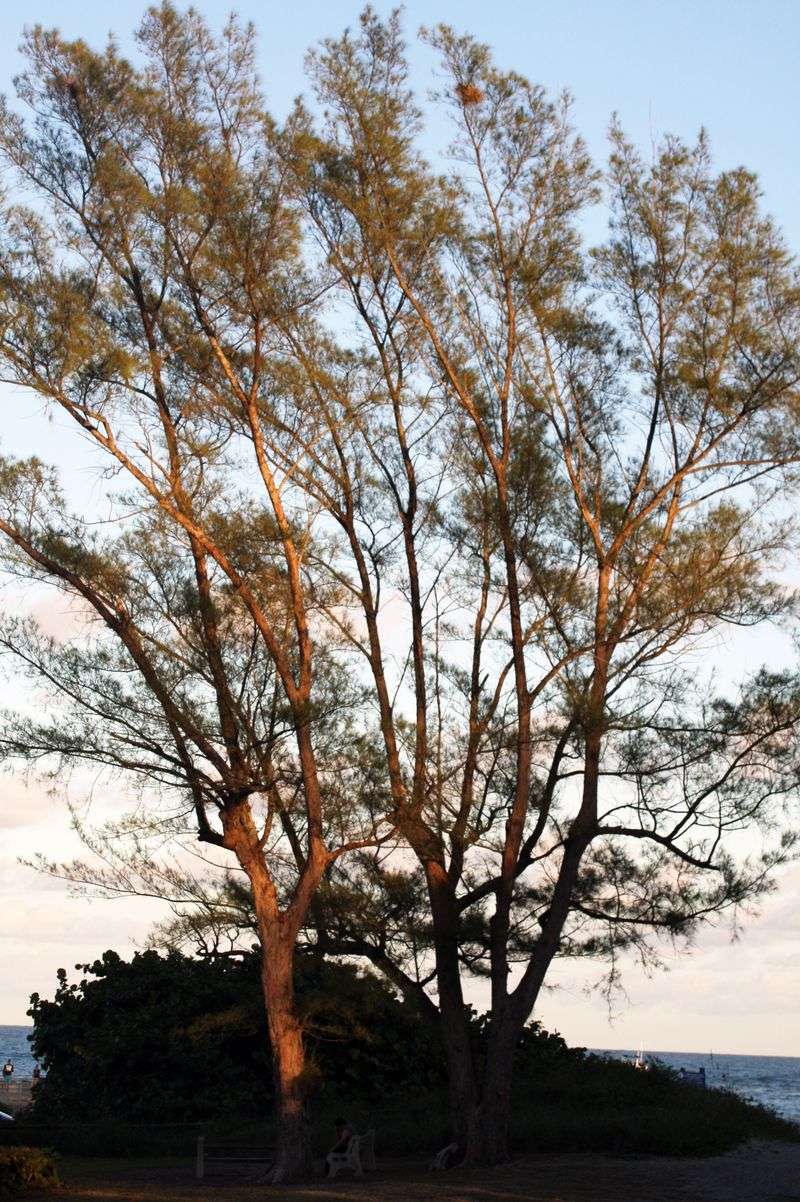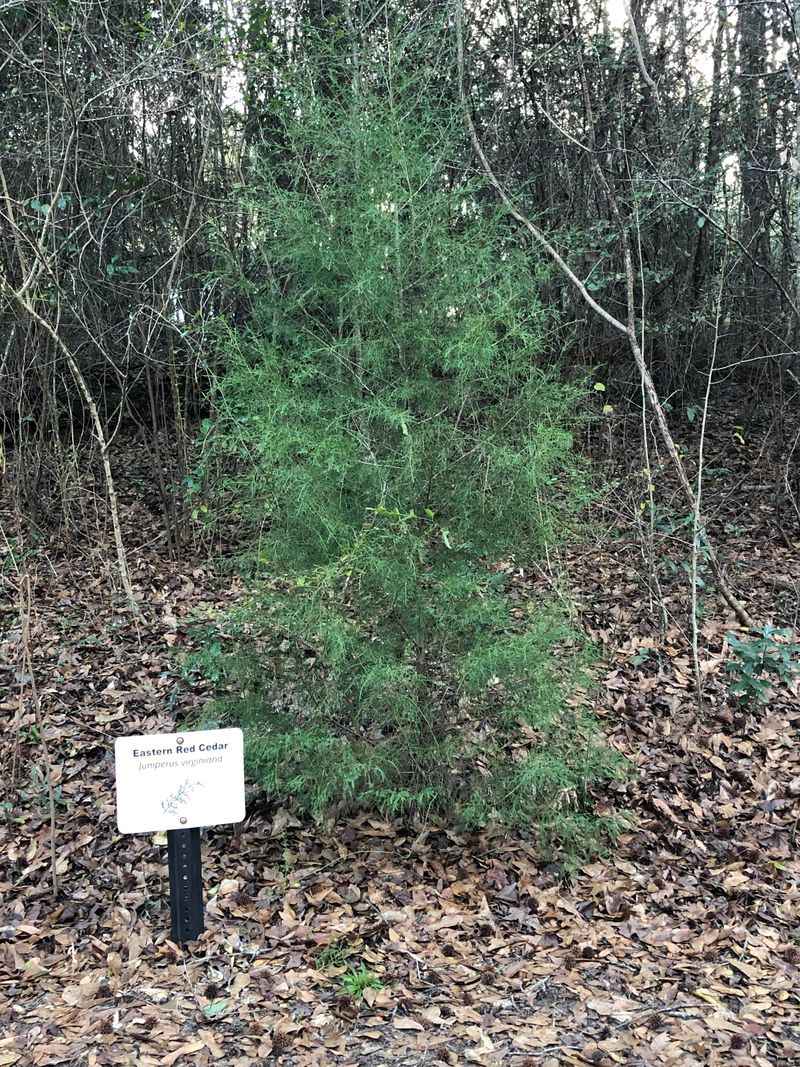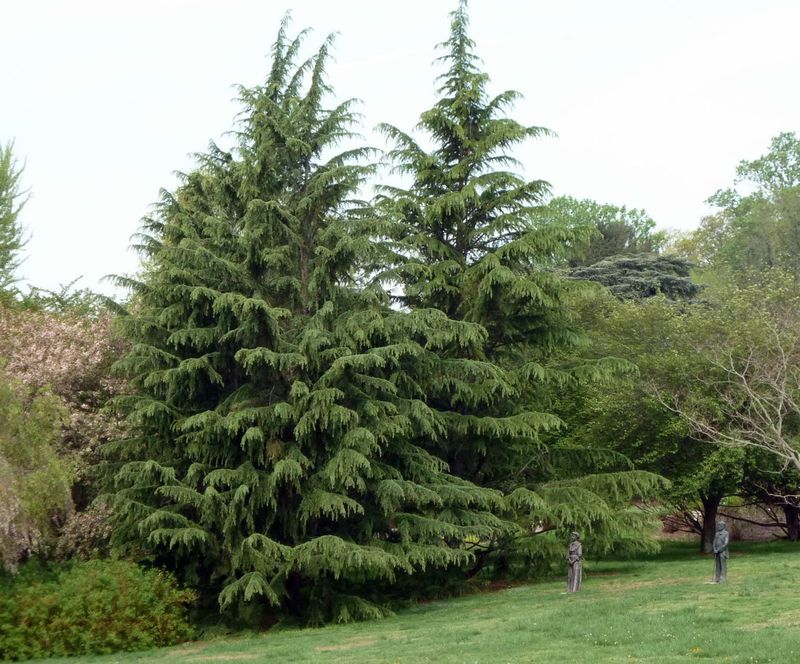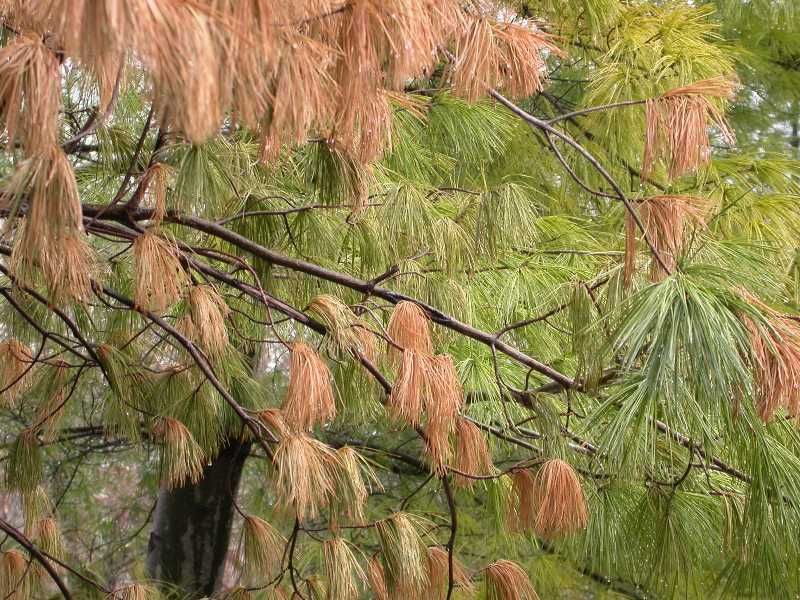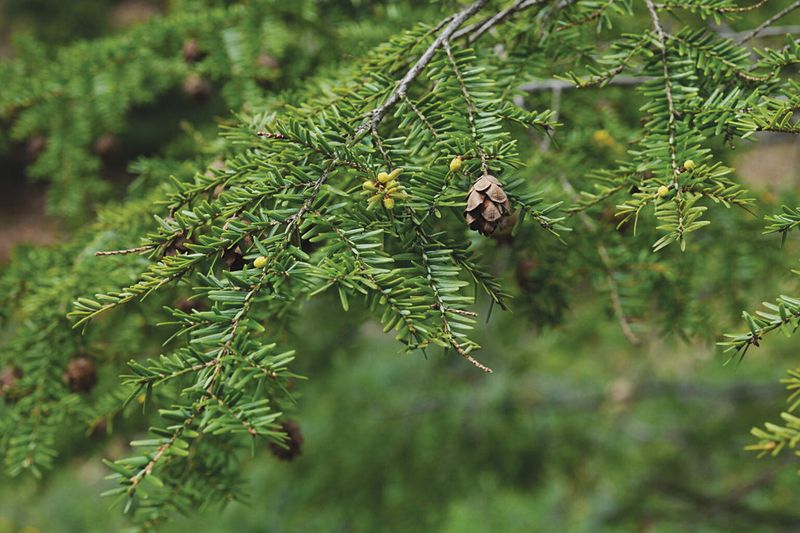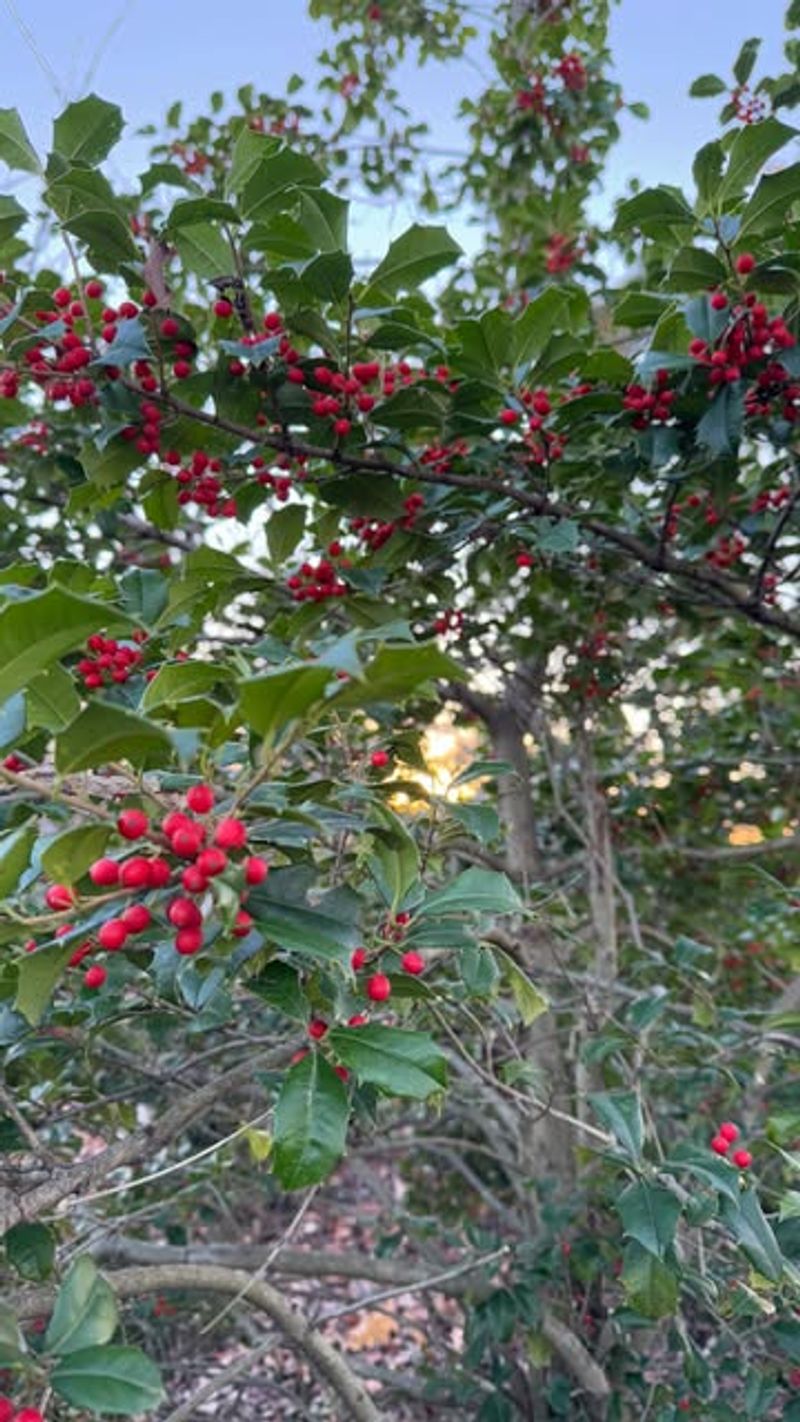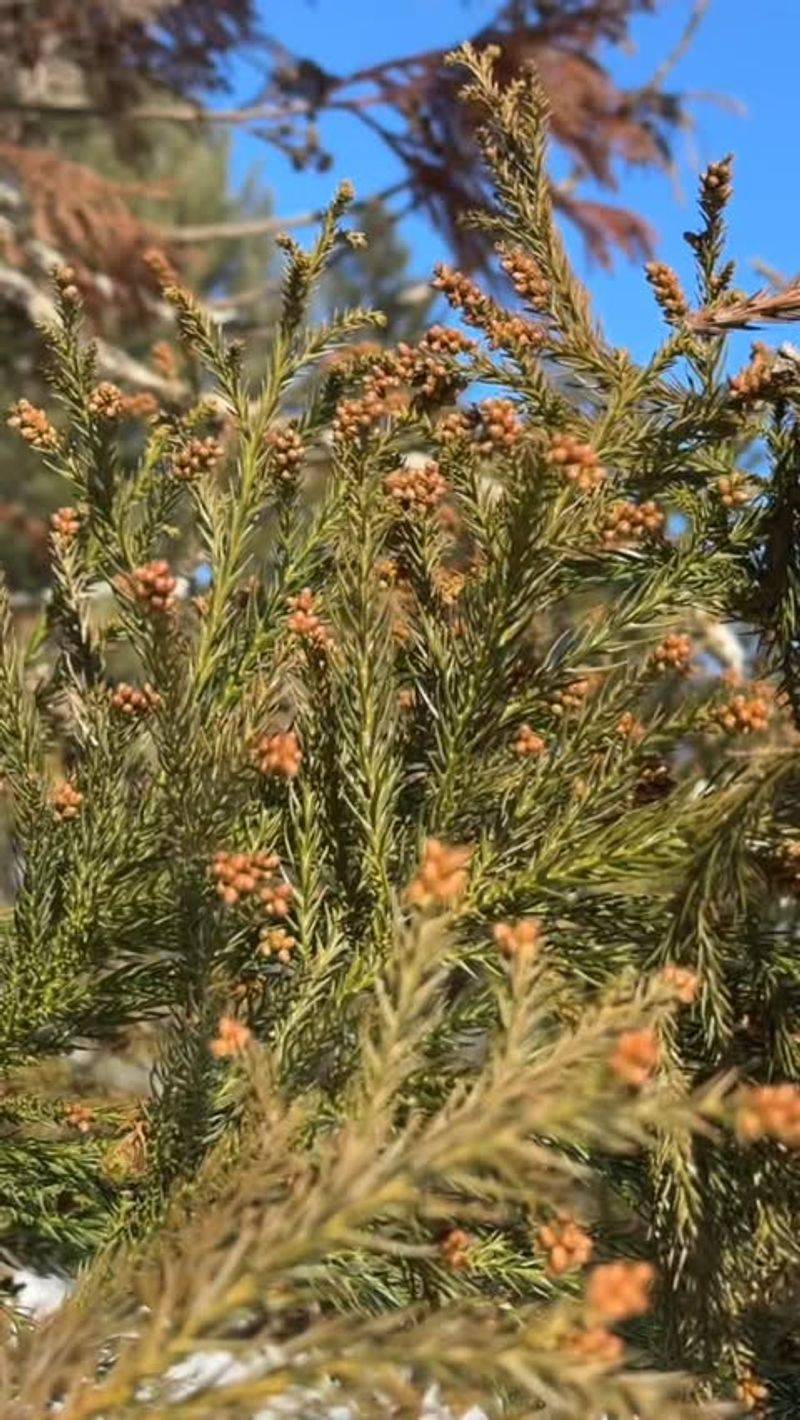Choosing evergreen trees used to feel simple—just pick the prettiest one and plant. But after dealing with cracked pavement and nonstop pruning, I’ve learned that looks can be deceiving.
Some evergreens grow way too fast, hog space, or send roots straight toward your foundation. Others seem fine for a few years… until they start crowding out everything else.
Now, I always do my homework before planting. The right evergreens can bring year-round beauty and privacy—without becoming a long-term regret.
1. Leyland Cypress
Fast growth might seem appealing, but Leyland Cypress trees quickly become unmanageable giants reaching 60-70 feet tall. Their shallow root systems make them prone to toppling during storms.
Susceptible to numerous diseases including bagworms, canker, and root rot, these trees often develop brown patches and die-off after just 10-15 years. I’ve seen entire privacy screens of these trees collapse after a single wet winter.
Maintenance requirements become overwhelming as they mature, requiring regular trimming to prevent them from becoming sparse and unsightly at the bottom while continuing to grow upward.
2. Italian Cypress
Elegant in Mediterranean climates, Italian Cypress trees struggle terribly in areas with high humidity or cold winters. Their narrow columnar shape often splits under snow loads or during ice storms.
Spider mites absolutely love these trees, causing browning from the inside out that’s nearly impossible to treat once established. My neighbor lost an entire row along his driveway after just three seasons due to pest infestation.
Spacing becomes a common mistake as homeowners underestimate their eventual 3-foot width, planting them too close to structures where they create moisture problems against siding and foundations.
3. Bradford Pear
Though technically deciduous, many gardeners mistake Bradford Pears for evergreens due to their late leaf drop. Their notoriously weak branch structure causes limbs to split from the trunk during wind or ice events.
Considered invasive in numerous states, Bradford Pears cross-pollinate with other pear varieties and produce offspring that aggressively take over natural areas. The spring flowers emit an unpleasant odor often compared to rotting fish.
After removing one from my front yard, I discovered dozens of seedlings sprouting throughout the neighborhood the following season – a cautionary tale about their persistent nature.
4. Colorado Blue Spruce
Stunning blue-silver color makes these a nursery favorite, but Colorado Blue Spruce trees perform poorly outside their native high mountain climate. Fungal diseases including needle cast and tip blight cause unsightly browning and needle drop in humid regions.
Heat stress in southern zones leads to shortened lifespans, with trees declining rapidly after 15-20 years instead of their potential 80-100 year life. The dense branching pattern collects moisture against structures when planted too close to buildings.
Watching my carefully tended specimen decline year after year despite following care recommendations was both frustrating and expensive – money that could have gone toward a more suitable species.
5. Empress Tree (Paulownia)
Often marketed as a fast-growing shade option, Empress Trees can shoot up 15 feet in a single season – creating weak wood prone to breakage. Their massive root systems crack foundations, sidewalks, and plumbing lines without mercy.
Seeds spread aggressively, with a single tree producing millions of winged seeds that germinate readily in disturbed soil. Several states have classified this Asian native as invasive due to its ability to outcompete native vegetation.
The enormous heart-shaped leaves create impressive shade but decompose slowly, smothering lawn areas and requiring constant cleanup throughout fall and winter months.
6. Eucalyptus
Aromatic foliage and rapid growth make eucalyptus trees tempting, but their brittle branches snap easily during wind events, earning them the nickname “widow makers” among arborists. The oily compounds in their leaves and bark create extreme fire hazards.
Allelopathic properties in eucalyptus prevent other plants from growing beneath them, creating barren zones in your landscape. Water consumption is astronomical, with mature specimens drawing up to 100 gallons daily from surrounding soil.
After witnessing a neighbor’s 30-foot specimen crash onto their garage during a mild windstorm, I’d never recommend these trees for residential properties where safety concerns should take priority.
7. Arizona Cypress
Marketed as drought-tolerant alternatives to Leyland Cypress, Arizona Cypress trees often develop bagworms and canker diseases in humid climates. Their bluish foliage turns an unattractive rusty brown when stressed by improper growing conditions.
Root systems remain shallow even at maturity, making these trees unstable during storms or in areas with high water tables. The sharp, prickly foliage makes maintenance painful and difficult without protective clothing.
My experience growing these in clay soil was disastrous – after three years of stunted growth and constant disease issues, I replaced them with native alternatives that thrived without the constant attention.
8. Arborvitae (Thuja Green Giant)
Popular as privacy screens, Arborvitae grow much larger than most homeowners anticipate, often reaching 40-60 feet tall and 12-20 feet wide. Deer consider them a winter buffet, creating unsightly bare patches that never fully recover.
Snow and ice cause permanent splaying of branches, destroying their columnar form. Once the interior needles die from lack of light, they rarely regenerate, leaving permanent bare spots that can’t be corrected with pruning.
The dense foliage becomes a perfect hideout for rodents and other pests. I’ve pulled countless mice nests from the lower branches of these trees, creating unexpected wildlife management issues around the home.
9. Norfolk Island Pine
Often sold as living Christmas trees, Norfolk Island Pines can’t survive outdoors in areas with freezing temperatures. When grown indoors, they frequently develop brown tips and drop branches due to insufficient light and humidity.
Their symmetrical shape becomes permanently ruined if the central leader is damaged, with no way to restore their characteristic tiered branch pattern. Growth rate indoors is painfully slow, with trees gaining only a few inches annually.
After babying one for five years only to have it collapse from root rot despite careful watering, I learned these tropical trees simply aren’t worth the effort outside their native climate zone.
10. Monterey Pine
Rapid growth makes Monterey Pines initially appealing, but their 80-100 foot potential height is completely unsuitable for average yards. Their shallow, spreading roots damage hardscaping and create lawn maintenance challenges.
Extremely susceptible to pine pitch canker fungus, which causes branch dieback, trunk cankers, and often complete tree death. The heavy cones (up to 6 inches long) become dangerous projectiles during storms.
Pine needle drop creates constant maintenance issues, clogging gutters and creating slippery walking surfaces. Having removed three diseased specimens from my previous property, the extraction cost alone should discourage most homeowners.
11. Irish Yew
Dark green foliage looks attractive, but every part of Irish Yew trees contains taxine alkaloids that are highly toxic to humans and pets. Ingestion of even small amounts can cause cardiac arrest with potentially fatal consequences.
Growth rate is glacially slow at 3-5 inches annually, meaning you’ll wait decades for meaningful landscape impact. The dense foliage collects dust and debris that’s difficult to clean, giving older specimens a perpetually dirty appearance.
Female plants produce bright red berries that attract birds, creating cleanup issues on patios and walkways. The staining from crushed berries on concrete is nearly impossible to remove completely.
12. Australian Pine
Despite the name, Australian Pines aren’t true pines but invasive casuarina trees that create environmental havoc in warm climate zones. Salt tolerance makes them particularly problematic in coastal areas where they displace native vegetation.
Shallow root systems combined with extreme height (up to 100 feet) create high risk for toppling during storms. The constant needle-like leaf drop creates a thick mat that prevents other plants from growing underneath.
Classified as prohibited invasive species in Florida and Hawaii, where removal is mandatory in many areas. The allelopathic compounds they release into the soil can persist for years after tree removal.
13. Eastern Red Cedar
Tough native trees that seem beneficial until you discover they’re alternate hosts for cedar-apple rust, a fungal disease that damages apple, crabapple, and hawthorn trees. The rust galls produce dramatic orange tentacles after spring rains.
Dense branching creates perfect habitat for bagworms, which can completely defoliate trees if left unchecked. The allergenic pollen causes severe reactions in sensitive individuals during spring release.
The aromatic wood attracts clothing moths, making these trees poor choices near laundry rooms or clothes lines. I learned this lesson after finding moth damage in wool sweaters stored in a cedar chest made from this very species.
14. Deodar Cedar
Graceful weeping branches look charming until they grow to their massive mature size of 50-70 feet tall and 20-40 feet wide. The pendulous branches make walking underneath impossible without constant pruning.
Extremely difficult to grow anything underneath due to dense shade and acidic needle drop. Their massive surface roots become trip hazards and complicate mowing as the tree matures.
Pruning wounds heal slowly and often become entry points for disease. The sticky sap that flows from cuts permanently stains clothing, tools, and nearby structures – something I discovered after trimming lower branches one summer.
15. White Pine
Soft, bluish-green needles feel wonderful but White Pines are extremely susceptible to white pine blister rust, air pollution damage, and white pine weevil that kills the central leader. The five-needled clusters turn yellow and drop excessively during drought.
Branches break easily under snow and ice loads, creating hazardous conditions during winter storms. Their mature height of 50-80 feet makes them completely unsuitable for small to medium sized properties.
The sticky sap attracts masses of aphids, which then produce honeydew that encourages sooty mold growth. After battling these issues for years, I finally removed my specimen when the maintenance became overwhelming.
16. Eastern Hemlock
Native to eastern North America, Eastern Hemlocks provide dense year-round screening while staying reasonably sized at 40-70 feet. Their feathery, delicate foliage creates a soft texture unlike most rigid evergreens.
Tolerates shade beautifully, making them perfect for woodland gardens or north-facing locations where other evergreens struggle. The small cones add winter interest without creating cleanup headaches.
Wildlife value is exceptional, with dense branches providing nesting sites for birds and winter shelter for numerous species. I’ve watched goldfinches, chickadees and cardinals use my specimen as both shelter and feeding grounds throughout the coldest months.
17. Hinoki Cypress
Slow-growing Japanese natives that maintain a manageable size of 15-20 feet in most landscapes. The distinctive fan-shaped foliage sprays maintain their deep green color year-round without winter bronzing.
Naturally architectural form requires minimal pruning to maintain its elegant shape. Cultivars like ‘Gracilis’ and ‘Nana Gracilis’ stay even smaller, making them perfect for foundation plantings or focal points.
Resistant to most diseases and pests that plague other evergreens. Mine has thrived for over a decade with almost no maintenance beyond occasional watering during establishment – truly a plant-it-and-forget-it option for busy homeowners.
18. American Holly
Glossy, spined leaves and bright red berries make American Holly a stunning four-season landscape tree that stays manageable at 15-30 feet tall. Native to eastern woodlands, it supports local ecosystems while requiring minimal care.
Female trees produce abundant berries that persist through winter, providing food for birds when other sources are scarce. The dense branching pattern creates excellent nesting habitat and security cover.
Remarkably adaptable to different soil types and light conditions, thriving in everything from full sun to partial shade. After planting one as a privacy screen along my property line, I’ve been rewarded with increasing bird activity each year.
19. Japanese Cedar
Cryptomeria japonica offers unique reddish-brown exfoliating bark and soft, spirally arranged needles that create visual interest year-round. Cultivars like ‘Yoshino’ and ‘Black Dragon’ stay much smaller than the species.
Remarkable resistance to deer browsing makes these trees excellent choices where deer pressure damages other evergreens. The pyramidal form requires no pruning to maintain its naturally pleasing shape.
Adaptable to various soil conditions as long as drainage is adequate. I planted three along my driveway seven years ago, and they’ve withstood everything from summer drought to ice storms without losing their graceful form or healthy appearance.

